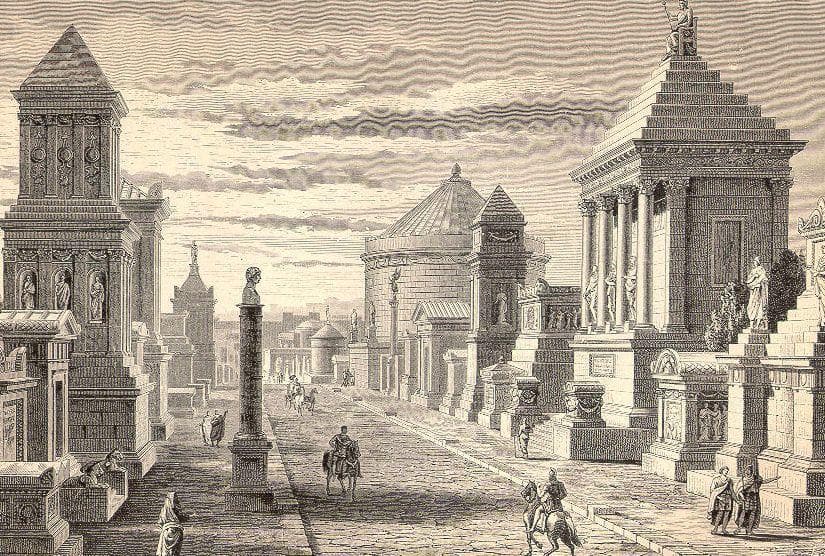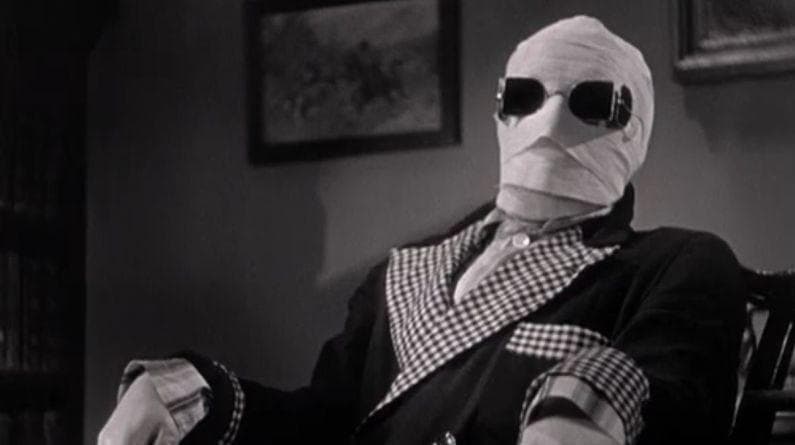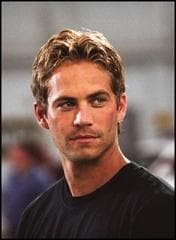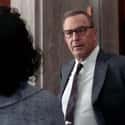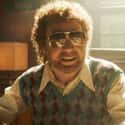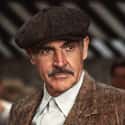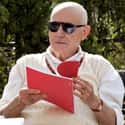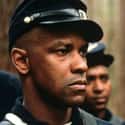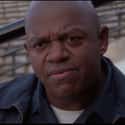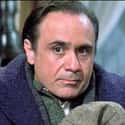-
(#1) Al Harrison In 'Hidden Figures'
The 2016 film Hidden Figures told the story of three African American mathematicians who overcame racist and sexist obstacles to make crucial contributions to NASA's space program in the 1960s. The movie celebrates Katherine Johnson (Taraji P. Henson), Dorothy Vaughn (Octavia Spencer), and Mary Jackson (Janelle Monae) for their strength and determination. But it also gives plenty of credit to Al Harrison (Kevin Costner), the white mission director who stands up for them in their fight against prejudice. In one scene, Harrison confronts Johnson about leaving her desk for long periods of time only to learn the reason is because the restrooms are segregated, and she's forced to use the only one available to her at the Langley Research Center.
Outraged at NASA's backwardness, Harrison tears down the restroom's "Colored Ladies Room" sign and tells his employees, "Here at NASA, we all pee the same color." In another scene, Johnson is forbidden from bringing calculations for John Glenn's shuttle mission into mission control, until Harrison intervenes on her behalf. Only then is she allowed to deliver her work and watch the launch in person.
It might sound inspiring, except Al Harrison wasn't a real person. Katherine Johnson also told a Vice reporter neither of these two incidents of white allyship ever happened. In reality, Johnson just used the "whites only" bathroom, and she watched Glenn's launch on a monitor from her desk.
In response to the Harrison character, some critics accused the writers of Hidden Figures of relying on the "white savior" trope, diluting Johnson, Vaughn, and Jackson's accomplishments by crediting a fictional ally. The movie actually suggests Harrison is so "enlightened" that he's unaware segregated bathrooms existed until Johnson told him about them - which is highly unlikely to be true about anyone living in America in the 1960s.
But in response to the criticism, director Theodore Melfi denied the Harrison character is problematic. "There needs to be white people who do the right thing, there needs to be Black people who do the right thing," Melfi said. "And someone does the right thing. And so who cares who does the right thing, as long as the right thing is achieved?"
-
(#2) Ray Foster In 'Bohemian Rhapsody'
Record executives in musical biopics seldom come off looking great. Since the audience already knows the musician in question is going to become an international superstar, anyone who doubts them is going to look like an idiot. So the scene in Bohemian Rhapsody when Ray Foster (Mike Myers) tells Freddie Mercury and his Queen bandmates that "Bohemian Rhapsody" is never going to be a hit is already questionable. The scene becomes outright ridiculous when you realize that not only did "Ray Foster" never exist, but the executive he was based on, Roy Featherstone, was a big Queen believer from the beginning.
Like many movies "based on" true events, Bohemian Rhapsody tried to inject more conflict into the story than there really was in real life. What salvages the moment is the casting choice. Mike Myers is famously a huge Queen fan in real life, and he used "Bohemian Rhapsody" to kick off his 1992 comedy Wayne's World. Casting a real-life Queen superfan to tell Freddie Mercury that "Bohemian Rhapsody" is terrible suggests the filmmakers were fully aware of the irony.
-
(#3) Dr. Nicholas Garrigan
- The Last King of Scotland
The Last King of Scotland follows a young Scottish doctor named Nicholas Garrigan (James McAvoy), who travels to Uganda in 1970 in search of adventure. Shortly after he arrives, General Idi Amin takes over the country in a coup. Garrigan becomes Amin's personal physician and eventually one of his closest advisors, but he soon grows disillusioned with Amin's brutality. (And has an affair with one of Amin's wives.) Garrigan eventually decides to slay Amin for the good of the country, but he's caught and tortured before he finally escapes.
The fact that the movie isn't about a king and doesn't take place in Scotland should tell you it's not exactly a documentary. It was based on a 1998 novel of the same name, which was only loosely based on real events. While Idi Amin was very much a real person and really was a homicidal dictator, he never had a Scottish doctor as part of his inner circle.
The closest real-life analog to Dr. Nicholas Garrigan was a white British army officer named Bob Astles. Like Garrigan, Astles went to Uganda in search of adventure. But unlike Garrigan, he actively sought to be a member of Amin's regime, and willingly participated in Amin's offenses. Like Garrigan, Astles became the only white person in Amin's inner circle, but he was less a political advisor than an unofficial fixer who eliminated anyone who stood in Amin's way. At one point, Astles was nicknamed "the white rat" after he forced Ugandan expatriates to kneel before Amin. After Amin's regime fell in 1979, Astles fled to Kenya but was extradited and served a six-year sentence in a Ugandan prison. It's estimated that Amin's regime claimed more than 300,000 lives, but Astles continued to deny any wrongdoing until his passing in 2012.
-
(#4) Sherif Ali
- Lawrence of Arabia
Lawrence of Arabia is ostensibly the story of T.E. Lawrence (Peter O'Toole), the real-life British intelligence officer who helped spark an Arab revolt against Ottoman rule during WWI. But it's really the story of Lawrence and Sherif Ali (Omar Sharif), a tribal leader who introduces Lawrence to Arab culture and co-leads the rebellion from the beginning. The onscreen chemistry between O'Toole and Sharif produced one of cinema's very first bromances.
In reality, there was no single Arab leader who stayed by Lawrence's side for the entire Arab Revolt of 1916. Sherif Ali was originally based on Sharif Hussein bin Ali, a real-life Hashemite leader whom the real Lawrence mentioned in his book The Seven Pillars of Wisdom. But overall, he was a composite of several different Arab leaders who worked with Lawrence during the rebellion. Like many composites in historical movies, Sherif Ali was created to summarize the accomplishments of many different people. Robert Bolt, the film's screenwriter, wrote that Sherif Ali was designed to represent the "emergent Arab nationalism" Lawrence relied on to destabilize the Ottoman Empire.
-
(#5) Jimmy Malone In 'The Untouchables'
For a movie that features an epic clash between two iconic figures in the history of American crime - Eliot Ness (Kevin Costner) and Al Capone (Robert De Niro) - it's a Chicago cop who steals the movie. Without Jimmy Malone (Sean Connery) pushing him to do what's necessary (even if it's outside the law), Eliot Ness would have never had the nerve to take down Capone. Malone gets all the best lines, including this classic: "They pull a knife, you pull a gun."
If the real Ness actually had a grizzled cop mentor, his name wasn't Jimmy Malone. The character was loosely based on a real-life law enforcement official named Michael Malone, but their similarities don't go beyond the surname. Michael wasn't an Irish-American who spent his entire career in the Chicago Police Department. Rather, he was a New Jersey-born IRS investigator who infiltrated Al Capone's organization for three years to help build the case against them. Far from the do-whatever-it-takes loose cannon Connery plays in the movie, the Michael Malone has been described as "the greatest undercover agent in the history of law enforcement."
But the story of Eliot Ness familiar to most Americans has never been about factual accuracy. The modern myth of Ness as a larger-than-life crime fighter dates back to his 1956 memoir, also called The Untouchables, which details his exploits as a Prohibition Agent in the 1920s and '30s. In the book, Ness essentially portrays himself as the man who single-handedly took down Al Capone, ignoring the major contributions of people like Attorney General E.Q Johnson and IRS agent Frank Wilson. ABC quickly adapted Ness's memoir into a hit TV series starring Robert Stack. The TV show furthered Ness's mythologization by regularly pitting him and his squad against iconic American gangsters he never met in real life. The 1987 Brian De Palma movie was essentially a reboot of that series, inheriting its oversimplified "good guys vs. bad guys" ethos.
-
(#6) Lester Siegel
- Argo
Ben Affleck's 2012 thriller Argo really wanted the audience to believe that its version of the story was accurate, going so far as to open with real newsreel footage of the 1953 Iranian coup and 1979 revolution that led to the movie's events. The basic plot of the movie really did happen. CIA agents really did pose as a Hollywood film crew to rescue six Americans trapped in Tehran after the fall of the Shah, and yes, they really did involve real filmmakers to create their fake movie.
But most of the details are made-up, including one of the three main characters. The protagonist, CIA agent Tony Mendez (Ben Affleck), was a real person, and the real Mendez did enlist the help of Planet of the Apes makeup artist John Chambers (John Goodman) to pull it off. But the movie versions of Mendez and Chambers break from their real-life counterparts when they bring in Lester Siegel (Alan Arkin), a heavyweight Hollywood producer whose involvement landed the plan credibility. The real Mendez and Chambers did bring in a third partner, but it was another makeup artist named Richard Sidell, not an influential movie producer. The Siegel character doesn't resemble Sidell on a personality level, either. Arkin modeled the character after legendary film executive and Warner Bros. founder Jack Warner. Arkin described Warner as "someone who is very comfortable in his own skin, someone who knew the ins and outs of the business, backwards and forwards."
-
(#7) Rayon
- Dallas Buyers Club
Dallas Buyers Club really tells two parallel stories. It's about Ron Woodruff's (Matthew McConaughey) fight to get necessary medication to treat AIDS, but it's also about his journey to unlearn his homophobia and respect LGBTQ+ people. After Woodruff is diagnosed with AIDS, he meets a transgender character named Rayon (Jared Leto), who's HIV-positive and addicted to drugs. Woodruff is initially hostile toward Rayon, but once he realizes she can help him distribute AZT medication to the LGBTQ+ community, they become business partners and eventually friends.
Woodruff really was a Texas electrician who was diagnosed with AIDS and started a distribution network to provide AZT to AIDS and HIV patients. Both Rayon and the film's other main character, Dr. Eve Saks (Jennifer Garner), were composites based on several real people who worked with Woodruff. But Rayon in particular wasn't just created to streamline the story. According to co-screenwriter Craig Borten, she was specifically designed to embody everything Woodruff was prejudiced against, which challenged Woodruff to confront his own bigotry. "We wanted a character that put everything that Ron was afraid of in his face," Borten said. "So we just thought, 'Oh, if it was a gay man you can look away, but if it's Rayon, you really can't look away.'"
-
(#8) Private Trip In 'Glory'
The 1989 epic Glory tells the story of the 54th Massachusetts Infantry Regiment, a real-life regiment that was the second all-Black unit to fight for the Union Army in the Civil War. Led by a white commanding officer named Robert Gould Shaw (Matthew Broderick), the 54th quickly attracts many recruits to fight against the Confederacy. Among them is Private Silas Trip. Trip is a runaway slave from Tennessee who joined the 54th in 1862, and he proves to be one of the unit's most strong-willed members, refusing to accept the Union Army's racial discrimination. When Trip's fellow soldiers are denied shoes, he deserts to procure some, then gets caught and flogged. Later in the movie, when the Army tries to pay the 54th's soldiers less money than white soldiers, Trip rips up his pay voucher in protest and inspires the rest of the 54th to do the same. In the movie's climactic assault on Fort Wagner, after Shaw is shot down while carrying the regimental flag, Trip rescues the flag before being taking a fatal bullet himself.
Aside from Colonel Shaw, most of the characters in Glory are invented, including Private Trip. One of Trip's deeds was based on the real-life heroics of a soldier named William H. Carney, who really did rescue the regimental colors during battle. But unlike Trip, Carney survived the fight and became the first Black soldier to receive the Medal of Honor. The pay dispute really did happen, although it was Shaw himself and not one of his soldiers who led the protest. If anyone in the 54th actually did go AWOL to swipe shoes, they wouldn't have been flogged for it, as the US Army banned the practice in 1861.
But overall, the movie does do justice to the 54th, both their heroics in battle and the prejudices they faced.
-
(#9) Fortune In 'Rudy'
Rudy is the ultimate underdog movie, and for an underdog to be an underdog, they need most people to doubt their abilities. In the movie, plenty of people scoff at Daniel "Rudy" Ruettiger's dream of playing football for Notre Dame, from his father and brother all the way to head coach Dan Devine. But there is one person who thinks Rudy has what it takes to play for the blue and gold: Fortune, the kindly groundskeeper. When Rudy first gets to Notre Dame, he can't afford a dorm room and breaks into Fortune's office at night to sleep. Fortune eventually finds out, but being a former football player himself, he relates to Rudy's struggle and encourages him to go for it.
By now, it's well-known that Rudy is one of the least accurate movies "based on a true story" ever made, and this detail is just one of dozens of examples. Not only was the real Rudy Ruettiger in a much better financial state than the film version - the real Rudy served in the Navy before college, and the G.I. Bill paid for his tuition and housing - the Fortune character didn't exist. He was a composite based on many real-life people who encouraged Rudy along the way. Then again, if the movie had been more honest about Rudy having so many supporters, it wouldn't have been quite so much of an underdog story after all.
-
(#10) Hawk Glass In 'The Revenant'
The 2015 film The Revenant is essentially a classic tale of survival against all odds, based on the real-life ordeal of American frontiersman Hugh Glass. In the movie, Hugh (Leonardo DiCaprio) and his teenage half-Pawnee son Hawk (Forrest Goodluck) are on William Henry Ashley's fur trapping expedition in the Dakota territory when Hugh is mauled by a grizzly bear. When he survives the mauling despite major injuries, his fellow trappers try to carry him on an improvised stretcher, but he only slows them down. Hawk and two other trappers agree to stay with Hugh until he perishes and then bury him. But one of the trappers, Fitzgerald (Tom Hardy), decides to speed things along and smother Hugh. Hawk catches him, and Fitzgerald stabs him right in front of his father. When Hugh is finally abandoned, his son's slaying motivates him to seek revenge.
The movie gets the basic facts of Hugh Glass's ordeal right - he really was mauled by a bear on a trapping expedition and abandoned, and he really did crawl almost 300 miles to safety. But it also took plenty of poetic license, starting with the Hawk character. Biographical details about Hugh's life are scarce, especially prior to the mauling. He claimed to have been captured by the Pawnee tribe and lived with them for up to four years. Although this is impossible to verify, if it's true it at least makes it possible he could have fathered a son with a Pawnee woman. But if some version of Hawk actually did exist, he definitely wasn't present on the Ashley expedition.
Bottom line, the "avenging a murdered son" storyline is just to give film-Hugh Glass motivation to survive. The real Hugh Glass's only goal was "not dying alone in the woods," which proved to be motivation enough.
-
(#11) Erica Albright
- The Social Network
The Social Network explores one of our modern-day "geniuses," Facebook founder Mark Zuckerberg, but it starts with an all-too-relatable moment. Zuckerberg (Jesse Eisenberg) is having drinks with his girlfriend Erica Albright (Rooney Mara), and it's immediately obvious he doesn't respect her. After a few too many cracks about her supposedly inferior education and status, Albright breaks up with him. As a parting shot, she tells him the reason he's had little success with women isn't because he's a nerd, but because he's an a**hole. In retaliation, Zuckerberg goes back to his dorm room and drunkenly creates a website that allows users to rank his female Harvard classmates by attractiveness. This website, "Facesmash," becomes "The Facebook," which eventually becomes the multi-billion-dollar behemoth we all know today.
The story of Facebook's founding didn't quite happen that way, for the simple fact that Erica Albright wasn't a real person. The scene takes place during Zuckerberg's sophomore year, when the real Zuckerberg was dating Priscilla Chan, whom he married in 2012. When The Social Network came out, Zuckerberg criticized the film for its inaccuracy. But for his part, screenwriter Aaron Sorkin freely admitted to using poetic license for the sake of a better story. "What is the big deal about accuracy purely for accuracy's sake?" Sorkin said at the time. "And can we not have the true be the enemy of the good?"
Practically since Facebook first launched at Harvard in 2004, people have vilified Mark Zuckerberg for everything from allowing user information to be hacked to refusing to censor Holocaust deniers. For a Facebook-hater, it might be tempting to credit the website's creation to something as a petty as post-dumping resentment. Zuckerberg's critics have plenty of reasons to criticize him, but creating Facebook to spite an ex-girlfriend isn't one of them.
-
(#12) Bobby Ciaro In 'Hoffa'
Danny DeVito's 1992 biopic, Hoffa, explores the life of infamous labor leader Jimmy Hoffa, but the story is told itself primarily through the eyes of Bobby Ciaro, Hoffa's doggedly loyal lieutenant. Ciaro first meets Hoffa while working as a truck driver in 1935, and Hoffa convinces him to join the Teamsters union. Ciaro eventually becomes Hoffa's right-hand man, participating in Hoffa's legal and less-than-legal activities. In 1975, everything comes to an end when Hoffa and Ciaro are both whacked.
The real Jimmy Hoffa didn't rely on just one loyal sidekick. Like many of the other characters on this list, Bobby Ciaro is a composite based mainly on two people: Hoffa's adopted son Chuckie O'Brien (who was also the inspiration for Tom Hagen in The Godfather), and president of the Local 299 union Bobby Holmes. Unlike Bobby Ciaro, the real Chuckie O'Brien was much less loyal to Hoffa. In the months before Hoffa's infamous 1975 disappearance, the two had a falling out when Hoffa failed to back O'Brien's bid for an administrative job in Local 299, and O'Brien retaliated by spreading rumors that Hoffa was an FBI informant. O'Brien also wasn't taken out with Hoffa. In reality, he was suspected of being involved in the slaying.
New Random Displays Display All By Ranking
About This Tool
Historical movies can let us learn about the development of human civilization and real historical events, great movies will help us to have a unique connection with great historical figures and legends. Many producers who use history as the theme always tout the historical accuracy of their movies, but in many cases, characters and events are often exaggerated or incorrectly depicted.
You may never know that a number of impressive movie characters were never actually existed in history, even some leading roles in historical movies. Here the random tool lists 12 fictional major characters in historical movies that may surprise you.
Our data comes from Ranker, If you want to participate in the ranking of items displayed on this page, please click here.



